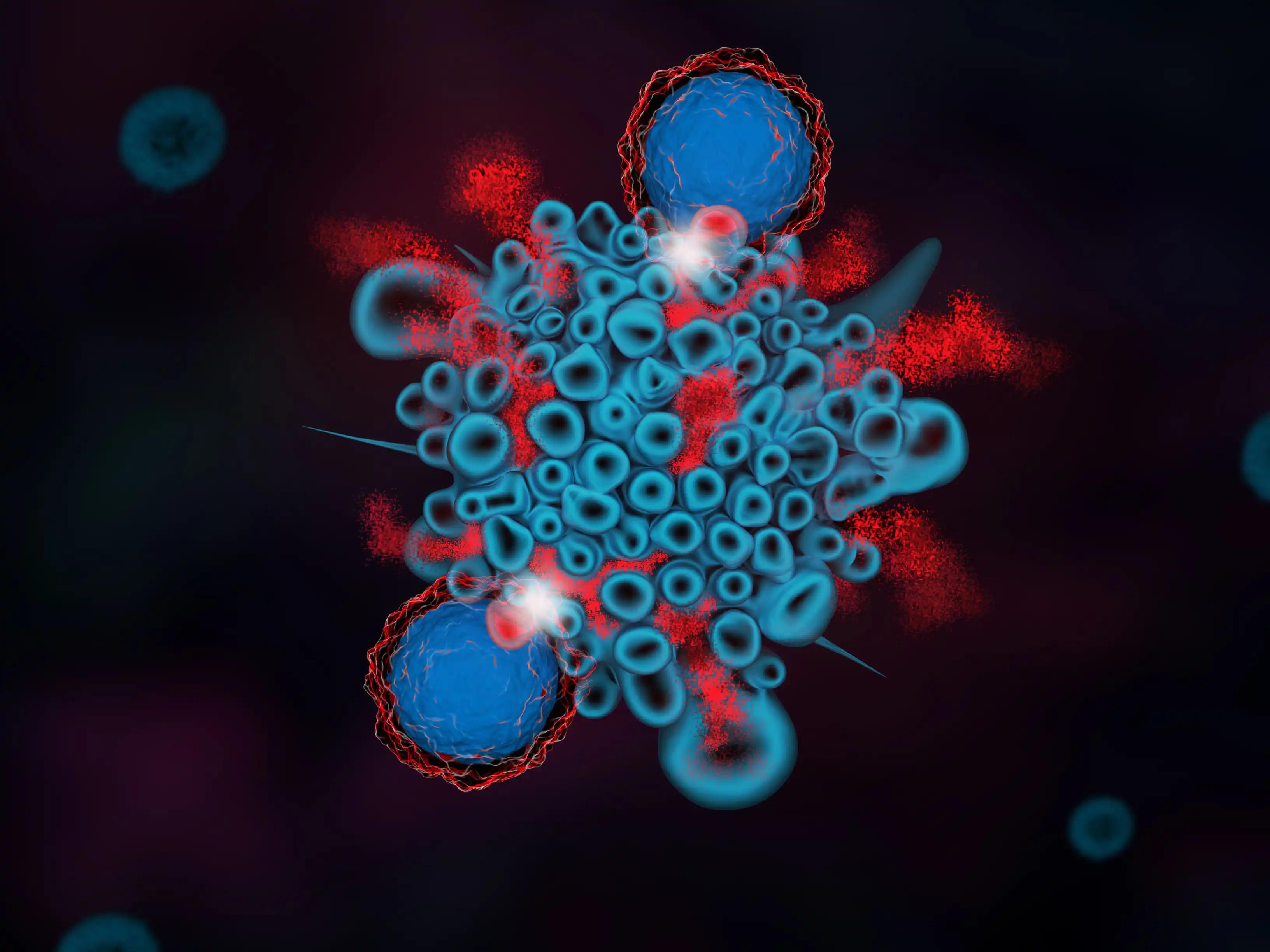KEY TAKEAWAYS
- Phase III trial (MC-FludT.14/L; NCT00822393) compared treosulfan/fludarabine (FT10) vs. busulfan/fludarabine (FB2) conditioning regimens for alloHCT in elderly and/or comorbid MDS patients.
- The primary endpoint was (EFS; events: disease recurrence, graft failure, or death).
- FT10 significantly improved EFS compared to FB2 in MDS patients, particularly those with high/very high-risk disease by IPSS-R.
- FT10 was associated with better GRFS and cGRFS than FB2, with comparable rates of acute and chronic GvHD in both groups.
The only potential curative treatment for patients with MDS is alloHCT, but the best way to prepare them for the procedure has yet to be determined. Researchers in the phase III research NCT00822393 (Beelen et al. Lancet Haematol 2020) compared the RIC regimen busulfan/fludarabine to a conditioning regimen with treosulfan/fludarabine (FT10) in patients with advanced age and/or coexisting AML and MDS (FB2). In this secondary analysis, we look at how the risk category affects outcome indicators for MDS patients.
Patients with MDS who had a comorbidity index (HCT-CI) of >2 and/or were older than 50 years old were included in the MC-FludT.14/L trial and were further stratified by disease risk (IPSS-R), donor type, and institution. Intravenous (IV) treosulfan (10 g/m2 BSA; days -4, -3, -2) or busulfan (3.2 mg/kg IV; days -4, -3), both in combination with 30 mg/m2 IV fludarabine, was randomly assigned to patients with a matched related or unrelated donor (day -6 to -2). The main measure of success was time to the first adverse occurrence (EFS; events: disease recurrence, graft failure, or death). Survival, relapse/progression incidence, non-relapse mortality, chimerism, GvHD, graft-versus-host disease, graft-versus-host syndrome, and safety were considered secondary goals.
The median age of the 199 individuals diagnosed with MDS (84 FT10, 115 FB2) in the whole analysis set was 61 (range: 41-70). Patients’ and illness characteristics were not different between the FT10- and FB2 groups. High/very high risk (HR/VHR) MDS accounted for 53% of the patients, intermediate risk (IR) for 27%, and low/very low risk (20%) for the remaining 20%. Kaplan-Meier estimates showed that FT10 had a higher EFS at 2 years than FB2 (68.1% vs. 48.2%; p=.048). There was a non-significant tendency (72.8% vs. 53.7%, 44.5% vs. 33.6%, 10.8% vs. 19.6%, and 19.9% vs. 28.6%) in favor of a better outcome in the FT10 group for OS, GvHD-free and relapse-free survival, cumulative occurrences of relapse/progression, and NRM. After 2 years, the cumulative incidence of cGvHD and acute GvHD (all grades, up to 100 days) were comparable between the two groups.
IPSS-R analysis showed that treosulfan significantly increased EFS for high/very high-risk patients (67.2% vs. 30.5%; p=0.013) and compared favorably for GRFS (43.0% vs. 22.2%, p=.055; Figure 1) and chronic GVHD-free/relapse-free survival (cGRFS; 47.4% vs. 22.1%; p=013 MDS) as well. This prospective phase III alloHCT experiment found that FT10 conditioning resulted in a higher patient survival rate than FB conditioning. Overall rates of acute and chronic GvHD were similar, but FT10 was significantly favorable regarding both GRFS and cGRFS, especially in individuals at high and/or very high risk. The clinical relevance of the novel FT10 regimen in elderly and/or concomitant MDS patients is supported by subgroup analysis.
Source: https://ebmt2022.abstractserver.com/program/#/details/presentations/841
Clinical Trial: https://clinicaltrials.gov/ct2/show/NCT00822393
M. Stelljes, R. Trenschel, D. Beelen, M. Markiewicz, E.-M. Wagner-Drouet, W. Bethge, P. Reményi, D. Niederwieser, G.U. Grigoleit, K. Schaefer-Eckart, F. Stölzel, F. Ciceri, P. Dreger, C. Junghanß, E. Holler, A. Rambaldi, D. Russo, M. Verbeek, J. Casper, F. Patriarca, M. Bieniaszewska, B. Glass, C. Scheid, N. Basara, J. Finke, I. Hilgendorf, H. Labussiere-Wallet, G. Stuhler, T. Schroeder. OS16-08 GRAFT-VERSUS-HOST DISEASE (GVHD) AND GVHD-FREE/RELAPSE-FREE SURVIVAL (GRFS) IN PATIENTS WITH MYELODYSPLASTIC SYNDROME (MDS) AFTER TREOSULFAN- VERSUS BUSULFAN-BASED CONDITIONING AND ALLOGENEIC HEMATOPOIETIC CELL TRANSPLANTATION (ALLOHCT).



